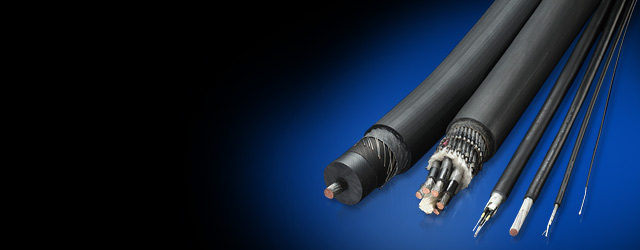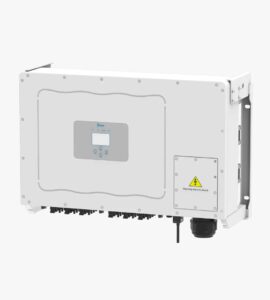Wire is a piece of metal that is used to carry electric current on the other hand, cable contain a number of wires inside a plastic or rubber which is used to carry electric signals. Copper, aluminium, plastics and alloys are the materials which are used to make these wires and cables. They are widely used in industries like defence and gas, oil, automotive etc. These days, due to increasing residences and houses in developing countries, there is an increase in the use of the wires and cables.
The domestic cables and wires industry has registered robust growth over the last five years led by the government’s focus on providing power to all and gradual pickup from the housing market. The wire and cables market in India has the potential to grow by USD 1.65 billion during 2021-2025, and the market’s growth momentum will accelerate at a CAGR of 3.80%. The development of infrastructural projects by the government and investment is driving the growth of the wire and cable market in India.
The market is expected to be driven by factors such as the growth in renewable power generation in India, the expansion and revamping of Transmission & Distribution infrastructure in India, and increasing investments in metro railways. Increased investments in smart grid projects and up-gradation of power transmission and distribution systems are also estimated to propel the demand for wires & cables globally. Significant investments in smart grid technology have resulted in an increasing need for grid interconnections. Additionally, rising investments in underground cables and the growth of renewable energy are set to escalate the adoption of wires and cables. Wire and cables demand is directly dependent on the growth of the manufacturing industry and infrastructure in the power, telecommunications, residential and commercial sectors. Thus the government’s initiatives on various fronts like – power, housing, infrastructure and digitization are sure to generate a lot of business for the wire and cable industry in the foreseeable future. Likewise, with the government’s emphasis on pushing renewable energy to the forefront, the industry is now looking forward to supplying cables for solar and wind power applications in addition to oil and gas, railways and other specialized segments. Wires and cables are deployed across an extensive range of applications which include consumer electronics, utilities, material handling, automotive, and entertainment/leisure amongst others. Growing inclination toward the expansion of prevailing grid networks coupled with lack of efficient electric infrastructure will propel the industry outlook over the forecast timeline.
Increasing Demand for Renewable Power Generation is a Vital Trend
Increasing awareness about the potential of renewable power has led to the significant adoption of renewable energy. In addition to this, supportive government initiatives for the development of renewable power are also a prominent factor responsible for the growth of renewable power generation, which, in turn, would further drive the demand for wires and cables. According to EIA’s International Energy Outlook 2019 report, 28% of the global power came from renewable energy in 2018, with the majority contributions from wind, solar, and hydropower. The EIA forecasts that renewables will account for almost half—49%—of the global electricity output by 2050.
Growing Demand from Data Centers and IT Facilities is a Current Trend
The increasing number of data centers and IT facilities for higher levels of availability, security, and affordable connectivity of IT infrastructure would increase the applications of wires & cables. Hyperscale deployments and liquid cooling are anticipated to be trending in 2020 and in the coming years, which is likely to fuel the demand for data centers and IT facilities. AC/DC power, ground, copper, and fiber optic are the prominent network cables used in data centers for Ethernet applications. According to Cisco, the global cloud data center traffic is projected to reach 20.6 zettabytes (ZB) per year by 2021, up from 6ZB per year in 2016. It depicts an increase of 628 hyperscale data centers globally in 2021 compared to 338 in 2016.
Demand for Cables in Railways
Transportation sector is growing very fast, the world population will witness significant growth in this sector in the coming years. The railways industry is playing a vital role in this growth, railways is the important sector that consumes wires and cables on a large scale. Hence railways cables are very important in order to meet the current challenges the railway industry is faced with. It doesn’t matter if it is the current supply on board or in the base of the rail, various control tasks, data transmission or if a complete cable network is required – in all fields cables for highest performance requirements are needed.
5G Infrastructure will Create the Demand for Cables
The 5G revolution promises astonishing gigabit-per-second data rates and near-instantaneous connectivity. It is projected to have a mass impact across many industries and change the lives of billions of both consumers and suppliers worldwide. When telecom carriers need to connect a microwave antenna to the indoor unit, they have one of three cable options to choose from: these include coaxial cable, a fiber-optic cable or a twisted-pair high frequency cable, all of which come with benefits and drawbacks.
Twisted high frequency cables have seen a rise in popularity in line with the rollout of 5G trials. The benefit of using twisted high frequency cables to connect the microwave antenna to the indoor unit is that you can combine both the data and power in one cable. This means that, for the carriers, there is a big cost and materials saving — you effectively cut the cost by half as you only require the installation of one cable, whereas with other cable types, you will need separate power and data cables. Connecting the increased number of antennas for 5G with fiber-optic cables could be extremely expensive. Therefore, high frequency cables have seen an increase in popularity over the past few years, and we predict that this will only increase as they are not just cost-efficient but also much easier to install than other cable types. Twisted high frequency cables are much more robust, resistant to the environment and they can be easily terminated on site by the installer.
Fiber-optic cables, on the other hand, are more sensitive to conditions such as humidity and dust levels. Most of the time the fiber-optic cable is pre-terminated, meaning that the installer just has to plug in both ends. However, the fiber-optic cable only carries data. Power must be provided by a separate cable, which generally has to be cut to length, stripped and terminated.
However, twisted high frequency cables are not the answer for every installation. Their performance tends to drop off over long distances. This means that the carrier will be obliged to use another type of cable if the antenna is too far from the indoor unit or the antenna will need to be placed in a closer, possibly less convenient, position. To help mobile carriers tackle the many challenges of 5G, companies like Nexans have developed a 5G ultra-dense infrastructure network with innovative fiber-optic cables and components and a new high frequency twisted pair especially designed for the needs of new microwave networks.
Industry Challenges
The wire and cable industry has vast potential in growth in coming years but it has some challenges also, the increasing price rise and competition from Chinese imports. The wire and cable industry is experiencing volatility in raw material prices, as the price of copper continues to increase, profit margins are squeezed and they become uncompetitive in the international market. County is experiencing an all time high price of fuel it’s direct impact on domestic transportation, in result wire and cable transportation has increased. Also, a large section of the industry is still unorganised; there is a lack of quality product offerings from these players due to non-compliance with the product guidelines.






